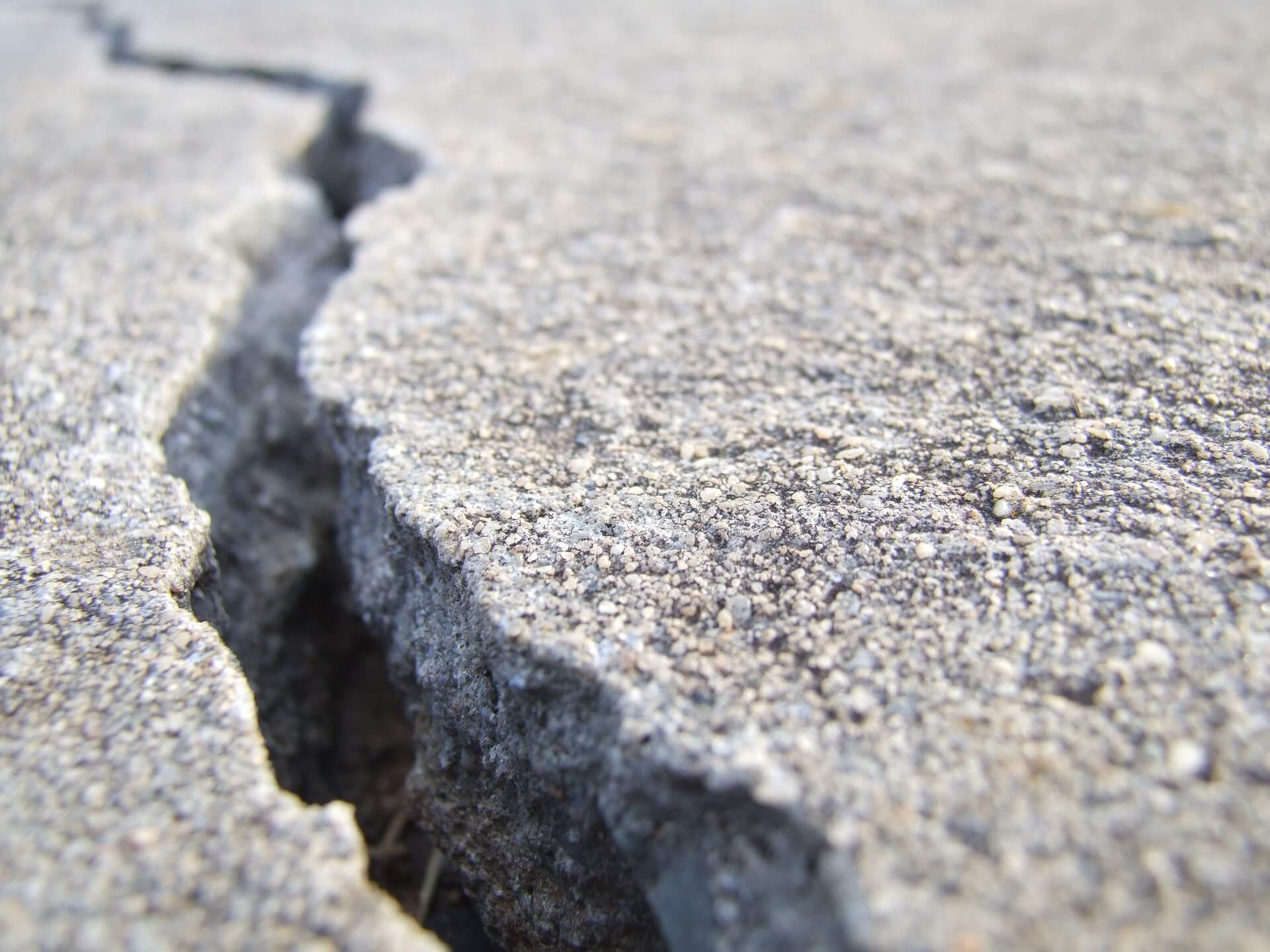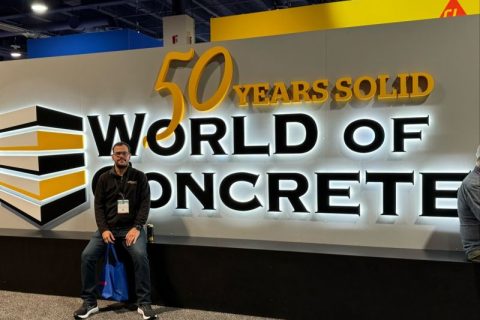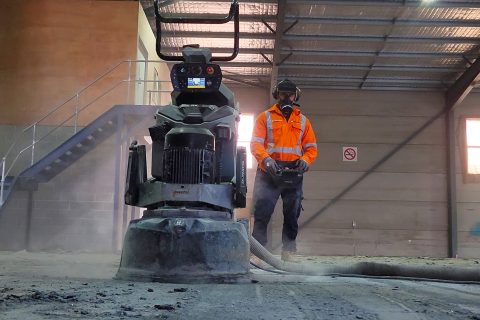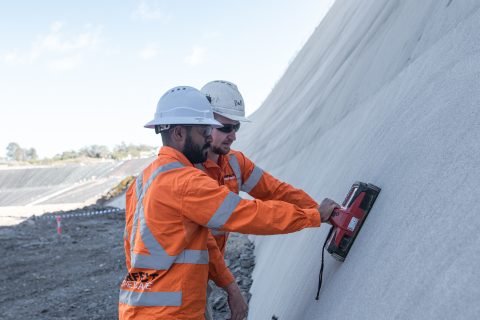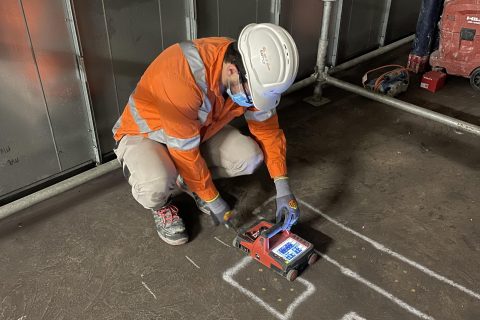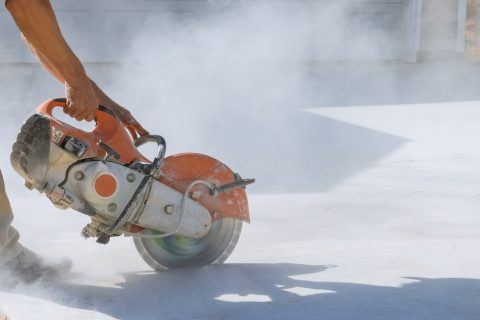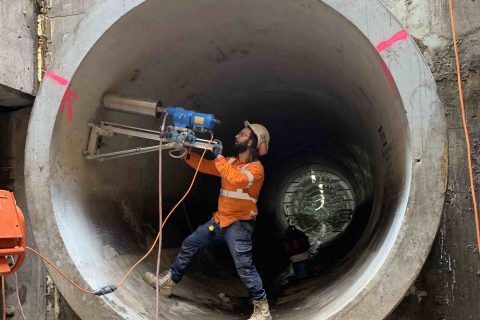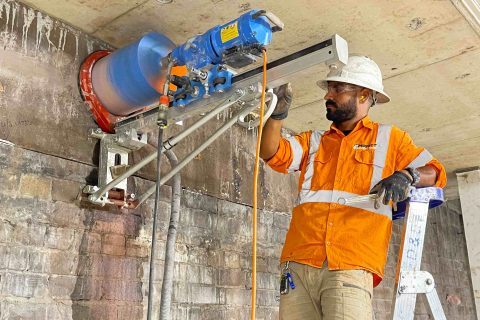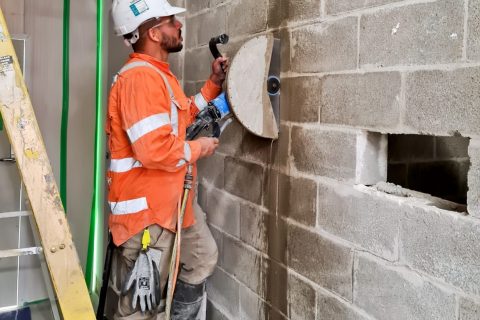Concrete patching is the best practice for fixing the bigger and wider cracks in concrete. For the patching works, engineers use the concrete patching compound. While using a concrete seal or a particular liquid filler often repaired the smaller cracks, which are no bigger than 1/4 inch. Repair specialists normally mix the patching compounds with water and use them with a trowel. They have a touch like grout and can be flattened and textured to mix with the adjacent part. Though, the colour of the patch may seem to be a new concrete and will not match the old part. Hiding the patch fully needs painting the surface with an appropriate paint of the concrete.
This article discusses the reasons why your concrete walls or platform gets cracked. Keep reading and get enough information about the troublesome reasons for concrete cracking.
Why Does Concrete Crack?
Engineers observe that small hairline fractures in concrete can seem over time if the concrete wasn’t correctly closed. These days, concrete sealers may help to maintain the toughness and resistance of the surface a great deal. Engineers believe that without sealing, concrete will be more and more exposed to friction, wear and tear, and outside causes.
Greater cracks may occur due to bad drainage system conditions, high thermal issues, seepage, soil settlement issues, or the cracking issues of the foundation. If you have a major issue with concrete crack, particularly if the crack appeared unexpectedly, there is a need to call the best available professional at your earliest.
The professional need to check the building foundation and some other factors like humidity and environment. Furthermore, if the flooring on any of the building sides has been cracked or found uneven, you must call an expert to repair the issues and underlying problems and level out the concrete properly.
Experts often observe that improper removal of the top floor and concrete subfloor may reason for some more grave issues. For example, if somebody has to remove a tile cover the surface of (something) with a coating in the kitchen. You unintentionally chisel directly into the concrete flooring, producing a fine crack. When you are going to install new flooring, you should fix this concrete crack you have to protect the floor’s integrity. If you are going to make use of the concrete subfloor being new floor material, you will have to fix the concrete for highlighting and stability reasons.
Types of Concrete Cracks
When the process of carbonation happens for a longer period, the concrete will may absorb carbon dioxide (CO2) gas from the atmosphere. It may cause a chemical reaction as cement has lots of lime in it, producing additional acidic concrete. This reasons the steel strengthening bars to rust and increase, the force of which will finally crack the cement. It can be verified by using a pH scale indicator. To cut the setting time of concrete, chlorides have been used. However, they leach calcium hydroxide leading to a loss of strength. It also may affect the durability of the material leading to early failures.
When water gets into the cracks in concrete, liquefying inorganic materials carry them to some other places producing bumps on the outside surface. The leakage of calcium hydroxide Ca(OH)₂ from concrete cracks can ease the development of ‘catamites’ which mimic the stalactites form in caves. Those buildings which are exposed to seawater are more vulnerable to erosion and corrosion. Bacteria do not have a great impact on the buildings and concrete. Though, they do play a role in ‘crown -rot corrosion’ in crude drain waters. Earthquakes are very dangerous to all constructions, especially concrete structures. They normally have a very negative impact on the structural integrity of the concrete.
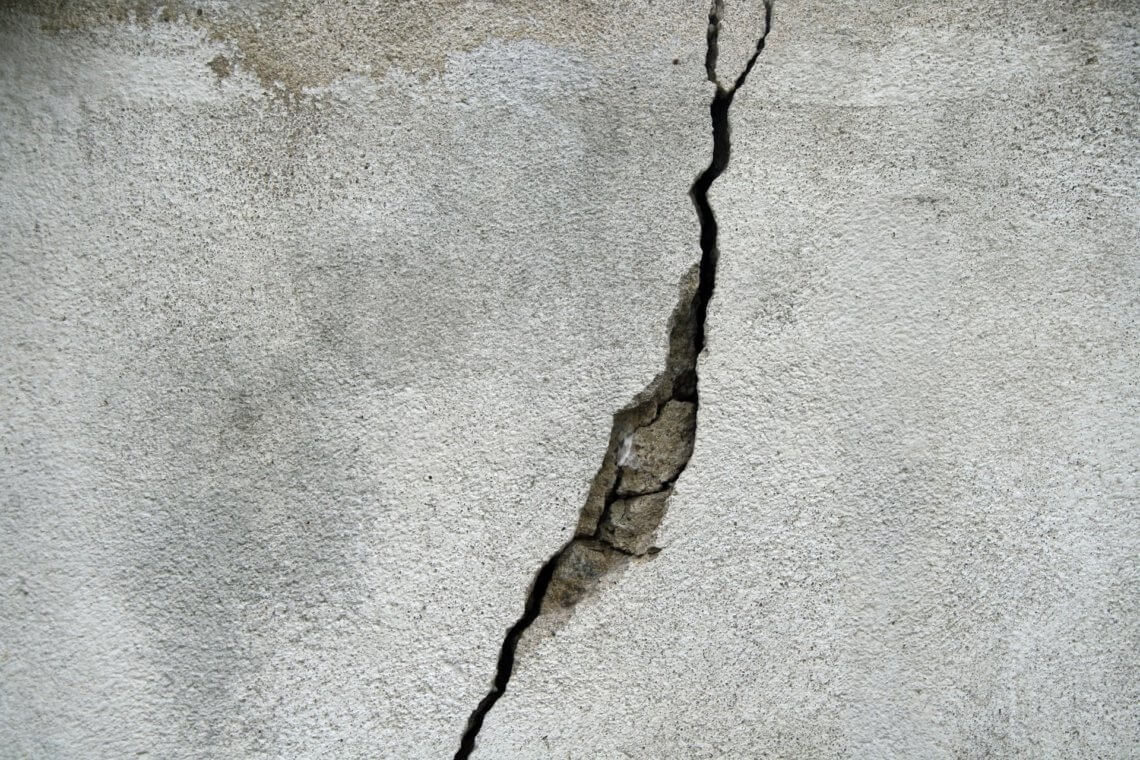
How to Repair Wide Concrete Cracks
There is no doubt that concrete crack experts adopt a top secret for fixing wide concrete cracks. Experts make an undercut against the sides of a particular crack. Furthermore, the crack has to be given an inverted “V” shape. This method assists to repair stuff to “key” into the crack, forming a mechanical bond.
Experts chisel the crack with a hammer and stonework chisel tool to broaden the base of the crack and remove any loose stuff from the old concrete. Then we have to remove all debris from the crack, a wire brush is often used in this case. If preferred, it requires cleaning the crack with any pressure washer tool or a spray jet tool. The water has to be removed so as the debris from the crack. For this purpose, a wet/dry shop vacuum or a brush can be used. It is very important to work sensibly to remove all dirt and grit from the crack.
If the upper surface is wet, that’s not an issue but there should be a water pool there. It is good to mix the concrete patching compound, subsequent to the manufacturer’s instructions and guidelines. It is advised to stab the trowel into the compound to eliminate all sorts of air pockets and assist work the patching stuff deep into the crack. Making a smooth surface of the patch is a must and a trowel is used to do this. Then following this feathering the compound into the surrounding concrete is a must-do. Finally, the brushing the surface of the repairing compound by using a dry paintbrush to touch the surface, if required.
Concrete Crack Filler
In the Australia market, masonry cracks elastomeric filler is the most widely applied with a caulking gun to fix the narrow concrete cracks. Instead, there are many different products are available in the bottles with some generic applicator tips. There is no doubt in the fact that small cracks, (hairline cracks) are often mended by using a vinyl concrete patching material used over the crack and leveled with a flexible knife or trowel afterward. Regarding the Australia market, for very fine cracks, the application of caulk or crack filler is also very good.
Watch out for your home cracks, they can be narrow cracks and they can be deep also, often spreading through the entire width of the slab of concrete. So, it’s a great idea to start the repair by padding foam backer rod into the narrow cracks to make a base to hold the restoration stuff. Backer rod comes in solid form and different sizes, the use of a rod width that is somewhat bigger than the crack’s width.
How Do I Stop My Concrete Cracking?
Building expert explains concrete as a blend of sand, aggregate, and water. Aggregate is a compound of grit, crushed stone, artificial materials, slag, and some other reprocessed kinds of stuff. The quality of concrete has been determined because of the particular ratio of sand to the whole collection and water. Everything has to be in proportion otherwise, the quality of the concrete may suffer a lot. Concrete is to be blended with a lime-based paste to form a soft putty so that it can be driven into some shape. To improve the strength of the concrete, additives can be thrown into the blend beforehand it is poured to make it extra flexible and reduce its probability of cracking.
In fact, curing defines the strength and durability of concrete. Curing is the phase throughout which concrete gets its toughness. The ninety percent of concrete’s strength is gained through the initial 4 weeks subsequently it is poured. To guarantee complete hydration throughout curing, concrete slabs are exposed to hydrophobic wax. The aim is to preserve the moisture in it, more old-style methods deal with spraying the concrete with water and covering it with malleable to get the same sort of effect. Could you believe that the remaining ten percent of the concrete’s strength is attained for several years or even decades? Carbon-dioxide absorption also helps to reinforce the concrete and develop more resilience against damage. Though, it also develops more acidic which can boost rusting of steel reinforcement bars. The steel will develop while it is rusting which can reason the concrete to crack under compression.
Building experts believe that the most general form of concrete is ‘reinforced concrete’ that holds a toughened framework or mesh. Concrete has a comparatively higher compressive strength but a meaningfully lesser malleable strength. One can say, that it is weaker when strained out and tougher in a compressed form. Steel, on the contrary, has a high workable strength which compensates for concrete’s lacking stretchy abilities. Steel rebar, consequently, lets concrete be overextended out in a thinner coating. It is good for strengthened concrete to crack when overextended out somewhat than compressed since the steel strengthening will help to hold it, for instance, the strengthening of a bridge.
How Does Concrete Crack Repair Work?
Experts say that concrete may crack for lots of reasons. First, it is significant to know that the concrete class and the way it is preserved will affect its absorption to cracking. The quality and class of any concrete have a direct effect on the building’s sturdiness and the curing procedure will impact its strength. That is why we believe in utilising the highest class materials and methods for the restoration of concrete cracks. Experts have to use up-to-date technologies and practices to identify concrete cracking reasons. The selection of the suitable approach will depend on the reason for the preliminary damage.

Crack Injection and Hose Injection
Building substance cracks are structurally weak points within the building. Furthermore, water penetration within the foundation or generally the structure is also very damaging for the buildings. In those cases, some elastic sealing or structural bonding for the crack will be required. To attain this, the crack has to be filled with its complete course with a polyurethane injection paste by using the pressure injection. The injection paste which is used can also be used in drinking water settings.
In the Australian market, tunnel waterproofing is also used. It needs some specialised waterproofing kind of stuff. They can differ based on the sort of tunnel fundamentals and building methods concerned. Special constraints like abnormally high water pressure and structure situations should be taken into thought throughout the restoration course. Moreover, other structural issue like chemical/mechanical pressures needs to be taken into account and measured through the assortment of suitable products. The subsequent application approaches are recorded according to the type and condition of the construction component.
- Tubbing Tunnel Construction
- Masonry Tunnel Construction
- Negative Side Waterproofing
- Waterproofing tunnels built-in mining technique
Sometimes, there is a must closure of cracks to avoid the penetration of water, chlorides, and other pollutants. Though additional crack sealing methods can reinstate volume or offer for absolute filling of a crack, the approaches outlined in this segment only cover closing the cracks at the outside surface of the concrete material.
Rout-and-Seal Cracks Method
In the modern building and construction world, routing and sealing cracks are said to be the finest means to stop water penetration into the cracks. In this method, a small amount of movement is expected because of the service loads, different impacts of the heat, or other reasons. During the routing process of a crack, the Contractor often makes use of a grinder to make a V-shaped trench, with the blow centred in the trench.
While it can differ depending on the use, the grooves must typically be approximately 3/8 inches deep. For some cracks in which a substantial amount of movement is expected, experts may place a bond breaker tape near the bottom of the groove before the sealing. The tape should remain on the bottom of the trench in order to be operated successfully. In this case, the bond breaker lets for a two-sided somewhat than a 3-sided bond. This allows for much better elasticity of the sealant. When the bond breaker shifts upwards, then it can decrease or remove the bonding surface on any side of the joint and may affect its efficiency.
We hope you are now familiar with what might be causing your concrete walls to crack.

